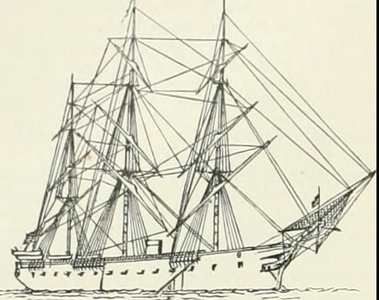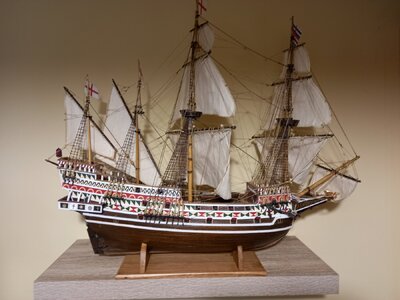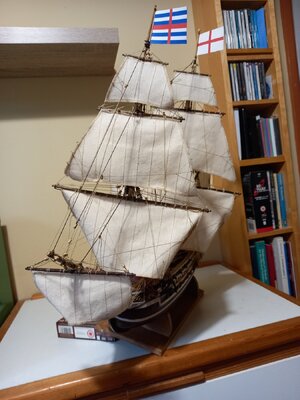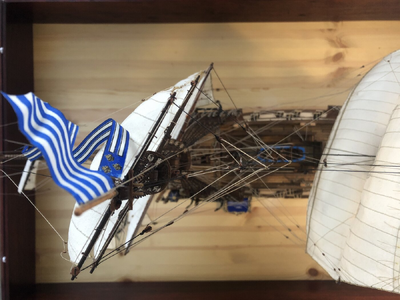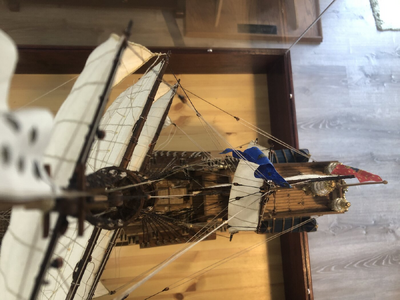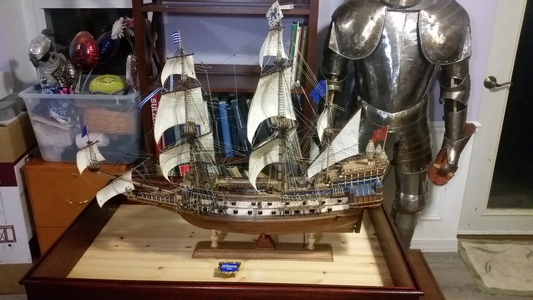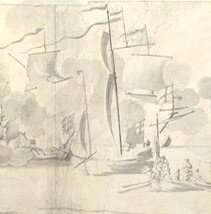Hello, I'm starting rigging and looking ahead to how I would like to display the Yards with furled (semi-furled) sails. Because of space reason, I would like to have the yards at roughly 45 degrees or even more. Basically, with one end toward the deck and the other toward the sky.
I looked at a lot of pictures and could not find any with this configuration. Did anyone ever saw one? Was there even a purpose for it? such as dock at a port?
let me know if you came across anything. -- cheers
For reference, I'm working on the "HMS Revenge".
I looked at a lot of pictures and could not find any with this configuration. Did anyone ever saw one? Was there even a purpose for it? such as dock at a port?
let me know if you came across anything. -- cheers
For reference, I'm working on the "HMS Revenge".





